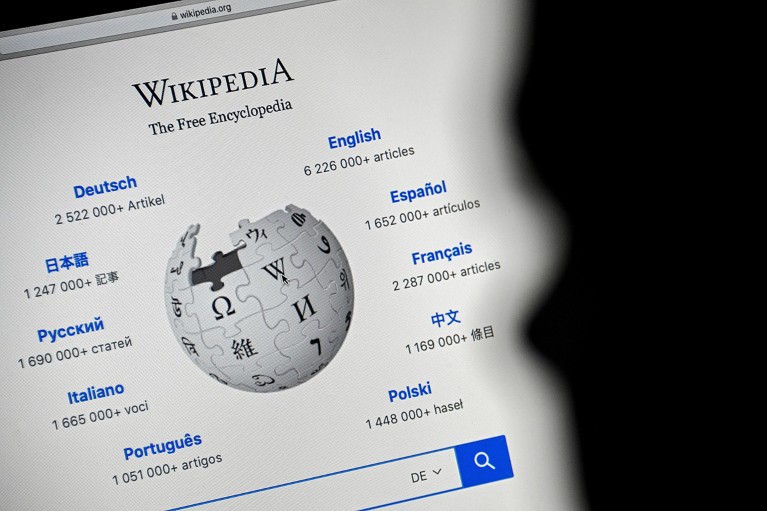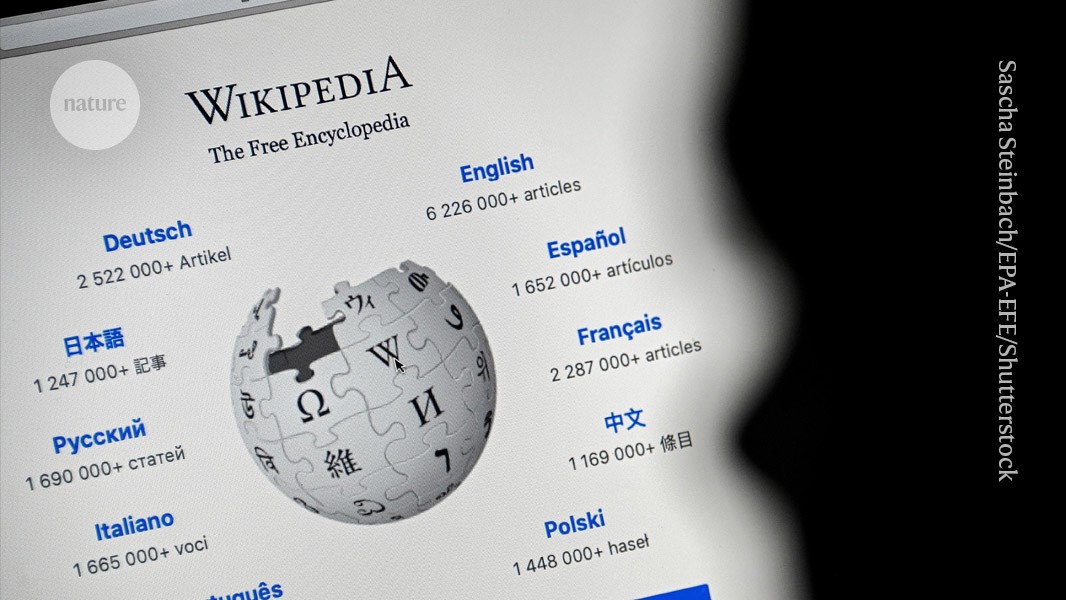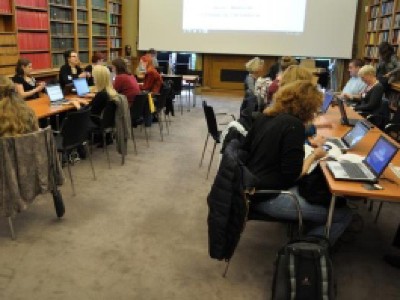
Data from hundreds of thousands of browsing sessions is revealing how people navigate Wikipedia. Credit: Sascha Steinbach/EPA-EFE/Shutterstock
An analysis of the searching patterns of nearly half a million people browsing Wikipedia suggests that the site’s users demonstrate three unique styles of curiosity.
There’s the ‘hunter’, who pursues specific answers, the ‘busybody’, searching for diverse nuggets of new information and the ‘dancer’, who links unrelated concepts through the process of exploration. The study, which was published in Science Advances on 25 October1, is the first to investigate this framework of curiosity outside of a laboratory environment.
As the world’s largest encyclopaedia, Wikipedia is a valuable resource for researchers exploring how people seek information. “It’s super important to understand more about how people actually use the content online and how they consume knowledge,” says Tiziano Piccardi, who researches how to improve the online information ecosystem at Stanford University in California. “You can translate what you learn to improve Wikipedia.”
Searching styles
Previous research on how people navigate Wikipedia was with relatively few participants under controlled laboratory conditions. The authors of the latest study conducted one such experiment, in which they reviewed the Wikipedia browsing behaviour of 149 people, monitoring how they moved from article to article. There, they identified the hunter and busybody styles of curiosity2. Their most recent work builds on these earlier findings by using real-world data from hundreds of thousands of Wikipedia users.
Edit-a-thon gets women scientists into Wikipedia
The team wanted to know whether the previous study’s findings were related to just the 149 participants, says co-author Dani Bassett, a human curiosity and learning researcher at the University of Pennsylvania in Philadelphia. “Or is this something that’s consistent across hundreds of thousands of people, and across different languages and different countries?”
Working with the Wikimedia Foundation — Wikipedia’s parent company based in San Francisco, California — the team reviewed two months of anonymized browsing data from more than 482,000 users of the Wikipedia mobile app from 50 countries and territories. These readers browsed articles in at least 14 languages.
“The data that we have is basically how people walk through Wikipedia, moving from page to page,” says Bassett. “From that data, we were able to extract networks. So how do people move in this larger information space? Which hyperlinks do they walk across, and what do those networks look like for each person?”
Social butterflies
The researchers found that they were able to generalize the curiosity styles found in their earlier study to this larger-scale analysis. They identified busybodies, who Bassett likens to social butterflies. There were also the hunters, who moved logically between different pages as if following a specific trail. The researchers also spotted a third style of curiosity — the dancer — that others had identified in earlier studies. This style applies to “somebody who is moving between ideas in a way that is quite creative”, says Bassett.
AI science search engines are exploding in number — are they any good?
By comparing how browsing styles varied between countries, and considering global inequality metrics, the researchers also found “a really strong relationship between the kind of browsing style that a person has and the level of equality in the country”, Bassett says. For example, loose, diverse knowledge networks, in which users view a variety of topics, are associated with countries with lower gender and education inequality. Although Bassett stresses that the research team doesn’t know what exactly is driving this correlation, they suggest several hypotheses, such as that societies that are unequal could also create conditions that constrain curiosity and people’s desire to search for knowledge.
“This is the first study that I see that is grounded in theory,” says Piccardi. “These navigation patterns are really, really complex, so grounding it in some theories and finding a way to explore them. I think it’s a good contribution.” He adds that future studies could explore different aspects of the information seeking process, for example how context and time can change how a user browses Wikipedia.
“It very much depends on the reason I’m using Wikipedia as to which of those models I might adapt,” says Andy Mabbett, a Wikipedia consultant based in Birmingham, UK.
Bassett agrees that people might deploy different curiosity styles in different situations, but suggests that understanding a person’s preferred style could help to improve teamwork. “When we are working with one another in teams, we can be more aware of the fact that we ask questions differently and we investigate knowledge spaces differently, and embrace that diversity.”




